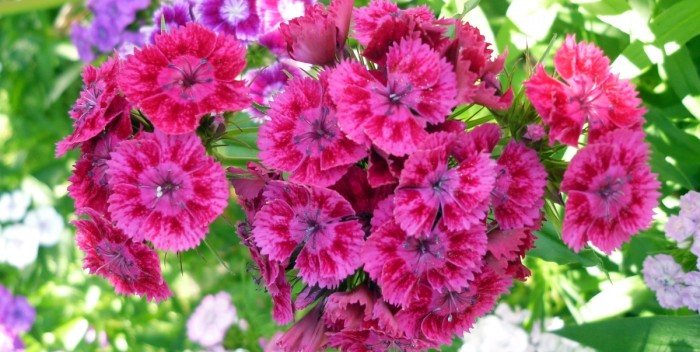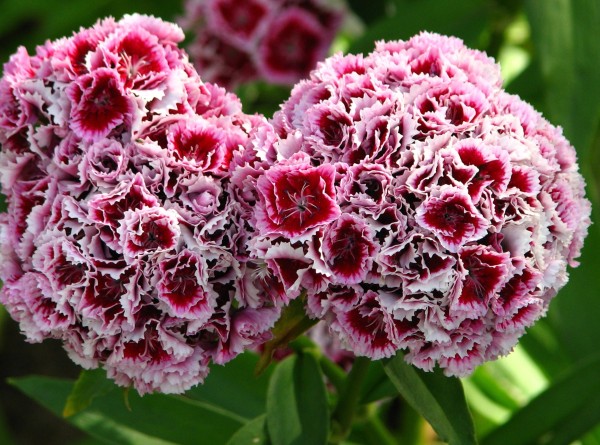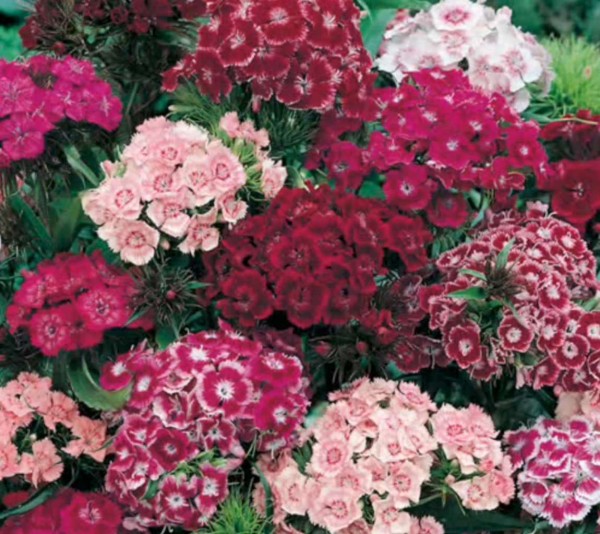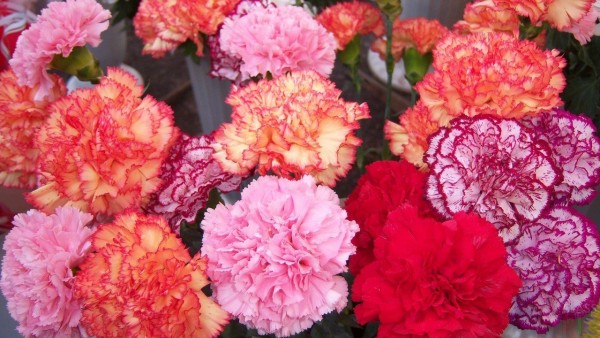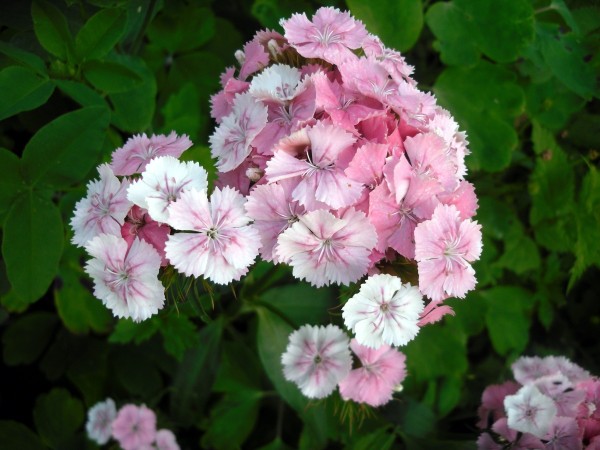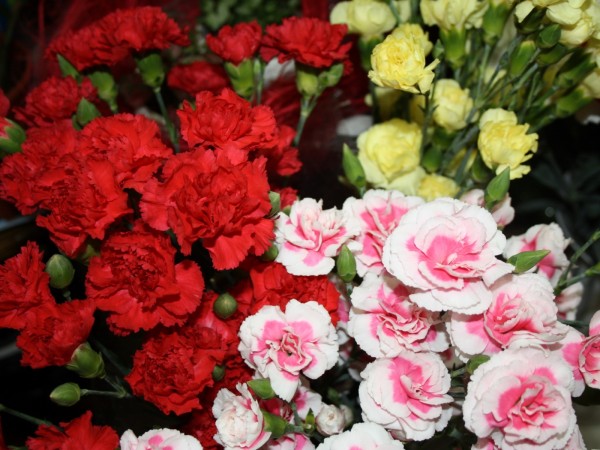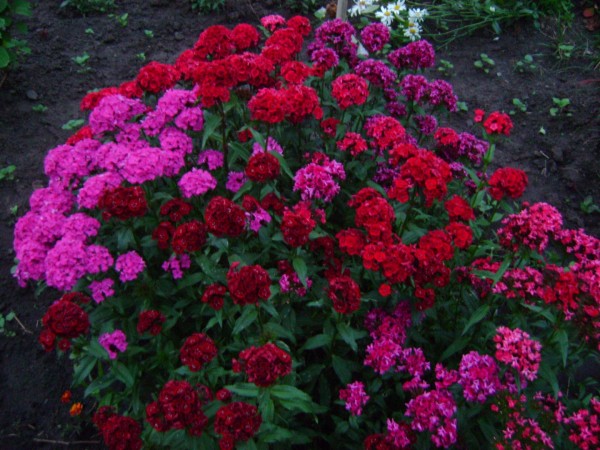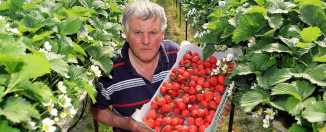Carnation: planting and care
Many peoples associate carnation with a feat. No wonder even in ancient Greece it was called "the flower of Zeus". In our country, it is closely associated with the victory in the Great Patriotic War. Even an inexperienced gardener is quite capable of growing a carnation.
Content
Planting a carnation
A lot of varieties of cloves have already been bred. They all prefer well-lit areas, but they can exist in partial shade. If a landing site carnations will be brightly lit, then the flower will have bright foliage and flowers, but the size of the bush will be compact and the duration of flowering is short.
The soil for carnations is light, with a weak alkaline reaction or neutral, with a moderate amount of fertilizer. Pay close attention to the moisture level of the soil. Too much water is bad for the health of the plant.
You can plant a carnation seeds or seedlings. For germinating seedlings, take humus, sand and turf soil. Mix the same amount of each component with each other. Make grooves in the soil and sow seeds in them. Sprinkle them with a thin layer of soil and moisten them with a spray bottle. Now cover the crops with foil or special agrotechnical cloth so that they do not dry out. When the seedlings hatch, remove the film. After the appearance of the third true leaf, dive the seedlings in separate pots, and after another week, feed them with mineral fertilizers.
Carnation varieties
A fairly large number of carnations have already been bred, they differ in size, shape and color. The following varieties are among the most demanded by gardeners:
- The bearded or Turkish carnation grows up to 80 cm in height, but there is also a low-growing variety suitable for indoor cultivation. This carnation differs from other varieties in that its flowers are collected by an umbrella up to 12 cm in diameter. It can be monochromatic or three-colored.
- The Chinese carnation is a perennial. However, the peculiarities of the climate of our country do not allow it to endure the winter months and in Russia it is grown as an annual. This carnation forms small bushes up to half a meter in height.
- The feathery carnation, expanding, forms a dense cushion of shoots. Its flowers can be simple or double, with a pleasant aroma. The color of the flowers ranges from pink to white.
- Alpine carnation is a low-growing plant that they like to use for decorating rock gardens, borders and as a ground cover plant.
Homemade cloves
Some varieties of carnations do well in at home... These plants include undersized compact varieties. For good health, such carnations need a room temperature of up to 15 degrees. At the same time, a sharp change in temperature should not be allowed in order to avoid the death of the plant.
Cloves need plenty of light, but direct sunlight can burn them. Therefore, shade the plant a little at noon. In winter, when the daylight hours are short, turn on additional lighting for the carnations, otherwise it will stop growing and become sluggish.
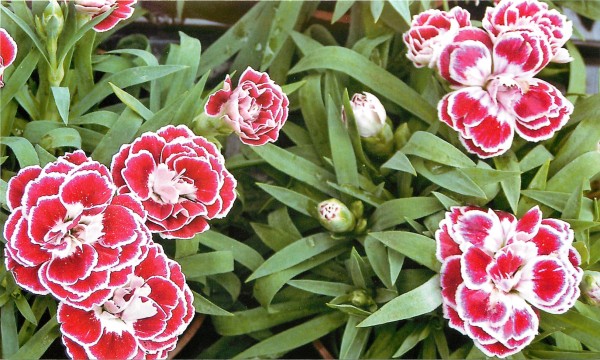 Provide the plant with good watering. Water your carnations especially often during flowering and active development. Do not allow the potting soil to dry out. Water the flower with warm, settled water. To prevent water from stagnating at the roots, do not forget to put a layer of drainage on the bottom of the pot.
Provide the plant with good watering. Water your carnations especially often during flowering and active development. Do not allow the potting soil to dry out. Water the flower with warm, settled water. To prevent water from stagnating at the roots, do not forget to put a layer of drainage on the bottom of the pot.
During the development period, the plant needs additional feeding. Therefore, fertilize with potassium at this time. It is best to spray the potting soil with the solution. Transplanting a indoor carnation is not required, as these flowers are grown as an annual plant.
Reproduction of carnation
There are two effective ways multiply cloves. In the first case, grow the plant using seeds. The second method involves vegetative reproduction. The latter method is applicable exclusively to perennial varieties of cloves. It is possible to propagate vegetatively using layering, cuttings and, in exceptional cases, by dividing the bush. Perennial varieties of carnations need to be updated every 4 years, otherwise they will creep and stop blooming.
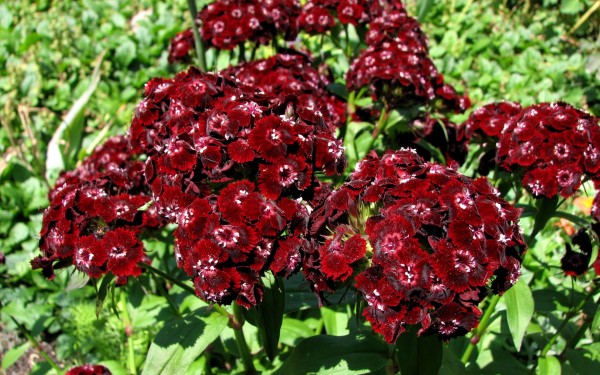 Cuttings are cut from shoots that do not have peduncles. The best times for this are May and June. The length of the finished cuttings should not exceed 9 cm. The main reference point is the presence of three leaves on the cuttings. The lower leaves must be removed and placed in a nutritious substrate of sand or vermiculite. Then you need to moisten the soil and cover the cutting with a jar. After three weeks, roots are formed on the handle. After that, the plant can be planted in the ground.
Cuttings are cut from shoots that do not have peduncles. The best times for this are May and June. The length of the finished cuttings should not exceed 9 cm. The main reference point is the presence of three leaves on the cuttings. The lower leaves must be removed and placed in a nutritious substrate of sand or vermiculite. Then you need to moisten the soil and cover the cutting with a jar. After three weeks, roots are formed on the handle. After that, the plant can be planted in the ground.
Carnation care
For perennial varieties of cloves, it is important to keep the soil moist. It is better to water the flowers more often, but little by little. So you will avoid rotting the root system. Be sure to weed your carnation beds and loosen the soil. This helps the plant develop better. Please note that weeding is necessary exclusively for young carnations, adult bushes grow and independently inhibit the growth of weeds.
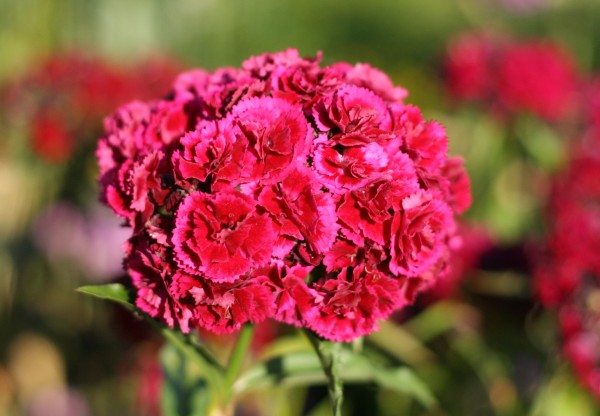 Like other plants, cloves need to be fed from time to time. Fertilizers should be applied during the period of active growth, during the setting of buds and after the end of flowering.
Like other plants, cloves need to be fed from time to time. Fertilizers should be applied during the period of active growth, during the setting of buds and after the end of flowering.
